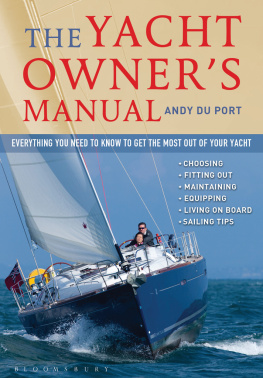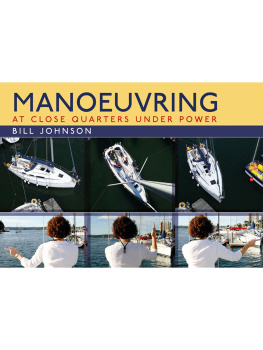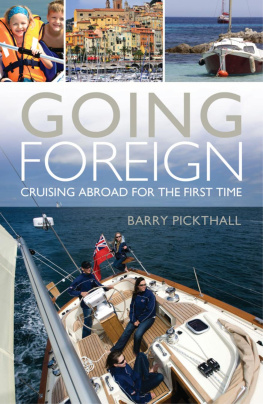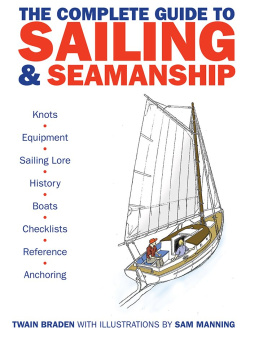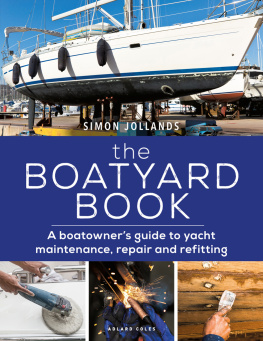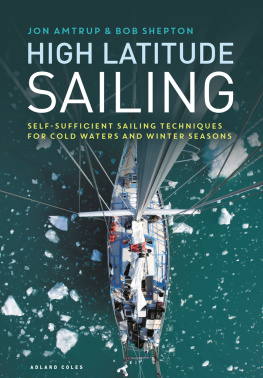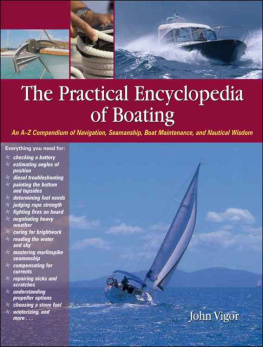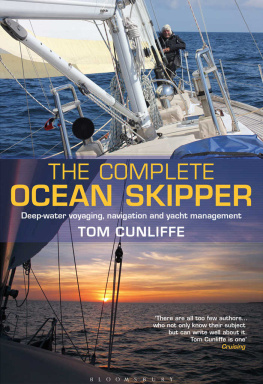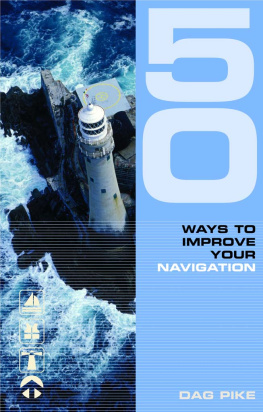
Adlard Coles Nautical
An imprint of Bloomsbury Publishing Plc
| 50 Bedford Square | 1385 Broadway |
| London | New York |
| WC1B 3DP | NY 10018 |
| UK | USA |
www.bloomsbury.com
Adlard Coles, Adlard Coles Nautical and the Buoy logo are trademarks of Bloomsbury Publishing Plc
First published 2015
This electronic edition published in 2015 by Bloomsbury Publishing Plc
Andy Du Port 2015
Page numbers refer to the print edition.
All images of the author with the exception of the following which are from Shutterstock:
Cover photographs: front David Harding, back Shutterstock
Andy Du Port has asserted his right under the Copyright, Designs and Patents Act, 1988, to be identified as Author of this work.
All rights reserved
You may not copy, distribute, transmit, reproduce or otherwise make available this publication (or any part of it) in any form, or by any means (including without limitation electronic, digital, optical, mechanical, photocopying, printing, recording or otherwise), without the prior written permission of the publisher. Any person who does any unauthorised act in relation to this publication may be liable to criminal prosecution and civil claims for damages.
No responsibility for loss caused to any individual or organization acting on or refraining from action as a result of the material in this publication can be accepted by Bloomsbury or the author.
British Library Cataloguing-in-Publication Data
A catalogue record for this book is available from the British Library.
| ISBN: | PB: | 978-1-4729-0548-2 |
| ePDF: | 978-1-4729-1390-6 |
| ePub: | 978-1-4729-1391-3 |
To find out more about our authors and books visit www.bloomsbury.com. Here you will find extracts, author interviews, details of forthcoming events and the option to sign up for our newsletters.
CONTENTS
1 INTRODUCTION

This book is aimed at the reasonably knowledgeable and experienced yachtsman or woman who is relatively new to yacht ownership, but I hope that it will also prove useful to those who have owned yachts for many years. It is not a sailing primer, nor will it attempt to provide you with absolutely everything you need to know about owning and caring for your yacht. That would take many volumes and still not be complete.
There is nothing quite like having your very own yacht. You are entirely responsible for fitting out, maintaining and sailing her, and solely accountable for all aspects of safety. You do not have to answer to a sailing school, yacht charterer or other owner, nor are you able to rely on someone else to fix things when they go wrong. You, and you alone, are the boss. You are skipper, navigator, engineer, cook, plumber and much more.
Does this sound a bit daunting? Well, many thousands of yachtsmen and women have taken the plunge before you, and there is a plethora of advice and information available just search online or glance at the bookshelves of any chandlery. The snag is that most of this advice is either massively detailed or buried in obscure sources that can take ages to unearth. Few books, if any, bring it all together in one slim volume aimed at those who do not need to go back to basics but who want some simple, practical guidance to get started. If you subsequently need to explore a particular aspect of ownership or maintenance more thoroughly, you may need to do more research or seek specialist advice.

Reefing early will give you confidence as you get to know your new boat.
Before owning my first yacht about 35 years ago, I had sailed dinghies and various other craft, mainly with the Royal Navy, gaining an Offshore Skipper qualification, as the RYA Yachtmaster Offshore was then known. Since then I have bought and owned five yachts. Two of them were bought through brokers; the other three were private purchases. Each boat has marked a milestone in my sailing activities, usually related to a growing family, but it was the first, a leaky old 25-foot wooden sloop, that gave me the most pleasure. She was totally mine, and I was in command. She had a very small and tired petrol engine, no VHF radio or any other electronics, no proper galley or fridge, but she sailed like a dream. I cruised the Solent and English Channel in her for several years before I realised that I was spending more of my precious leave maintaining her than actually out on the water. The change to GRP was inevitable, and the buying process started again.
The next was a composite Twister (GRP hull and wooden coachroof). Although slightly longer, in many ways she was similar to the first one: worn-out petrol engine, long keel, and a marvellously sea-kindly yacht. Both these boats taught me a lot about yacht ownership. I had little money to spare so I had to choose equipment carefully and could not afford to pay someone to do the routine maintenance. During the next 13 years I slowly and rather reluctantly bowed to the pressures of the 20th century and installed a VHF radio and a furling headsail. I even reinstalled the gas system so that the gas bottle no longer lived in the cockpit locker next to the hot engine exhaust. Not only did I own the Twister for a long time, I also married and had children, and the boat was just too small for a family of four. And so the buying process started once again.

A breezy day off the Needles. Perfect conditions for training your crew before venturing further afield.
Two more boats followed, a Westerly Griffon (shorter but much more room) and a Hallberg-Rassy 29. The latter not only had a VHF radio, a fixed echo sounder and log, she even had a fridge and a very basic chart plotter. The downside was that we quickly became used to these modern luxuries, and so maintenance and costs inexorably increased in order to keep everything running. After a few years, with growing children and more ambitious cruising plans, the inevitable search began for something a bit larger and faster. The result was our present boat, a Hallberg-Rassy 34. She is perfect for our needs: solidly built, ample room, handles beautifully under sail and power, and gets us across the Channel a good two hours faster than any of her predecessors. We also moved into the 21st century literally and metaphorically with radar, chart plotter, two fixed GPS sets, fridge and a hot air heater.
Although many maintenance tasks in a fibreglass boat are now much less onerous than in the days of wood, paint and varnish, most of the business of yacht ownership has not changed. Rigging, sails and engines still need checking and servicing on a regular basis, you must still navigate carefully and avoid other ships, and you must still keep your crew safe and happy. Indeed, a skipper/owner now has to have more technical knowledge as electronics pervade all aspects of boating. Expectations of standards of comfort have also increased dramatically. No longer will crews put up with a cold, damp yacht where sleeping bags on hard bunks is the norm, and standard fare is bacon butties and chocolate bars. They now demand warmth, duvets and good food. They also, quite reasonably, expect to be kept safe without taking undue risks a result of an increasingly litigious society, no doubt, but also added pressure on the skipper.

